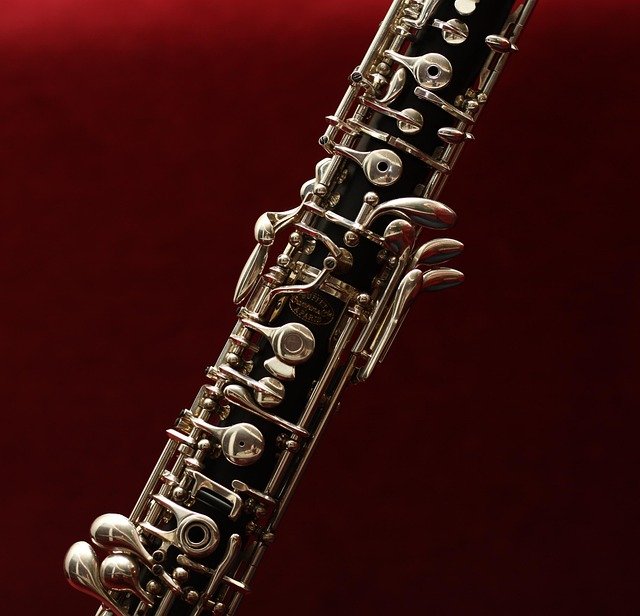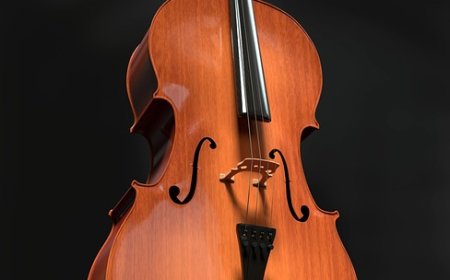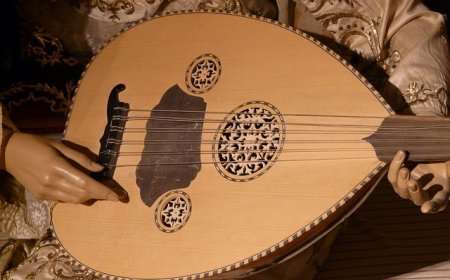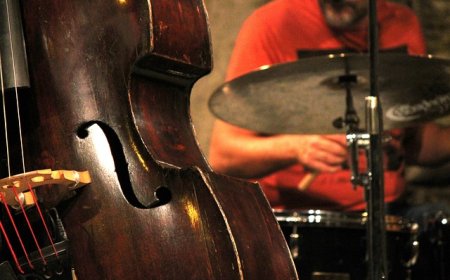Oboe Facts for Students | Learn How the Oboe Works & Its History
Explore the oboe—how it works, its parts, history, and famous players. A student-friendly guide to learning this expressive double reed woodwind instrument.

🎼 All About the Oboe
🥇 Introduction
The oboe is a beautiful and expressive instrument in the woodwind family. It has a sweet, singing voice that’s often heard playing solos in orchestras, movie soundtracks, and concert bands. What makes the oboe special is its double reed, which gives it a unique, slightly nasal tone that cuts through the sound of other instruments. The oboe often plays the tuning note for the entire orchestra and is loved for its emotional and elegant sound.
🎶 What Is an Oboe?
The oboe is a woodwind instrument played by blowing air through a double reed—a thin pair of reeds tied together that vibrate when the player blows between them. The oboe has a long, narrow body made of wood or synthetic material and is covered with metal keys that are pressed to play different notes.
Most modern oboes are made in the key of C and have a range of about two and a half octaves. The oboe’s tone is both bright and haunting, and it's a favorite for melodic solos, especially in classical music. Because of its rich sound, the oboe is also featured in soundtracks, chamber music, and wind ensembles.
🧩 Parts of the Oboe
The oboe has three main sections that fit together, along with a special mouthpiece:
-
Reed – The double reed is made from two pieces of cane tied together. It’s placed into the top of the instrument and vibrates when air is blown through it.
-
Upper joint – This section includes the top tone holes and keys played by the left hand.
-
Lower joint – This connects to the upper joint and contains the keys played by the right hand.
-
Bell – The bottom part that flares slightly to help project the sound.
Each key opens or closes a tone hole to change the pitch. Oboes also have octave keys that help the player jump to higher notes. Some advanced oboes have special keys for tuning and technique.
⚙️ How Does the Oboe Work?
The oboe works by using air to vibrate a double reed. When the player blows into the reed, the two thin blades of cane vibrate against each other. This vibration moves through the oboe’s wooden body and creates musical sound.
To play different notes, the player presses keys and tone holes that control how long the air vibrates inside the instrument. The longer the air column, the lower the note. The shorter the air column, the higher the note.
Because the oboe is a closed conical bore instrument, it has a smooth and even tone across its range. It takes careful embouchure (mouth shape) and air support to play the oboe well, especially since the reed is small and sensitive. The oboe requires precise breath control and is often used for playing expressive, lyrical passages.
📜 History of the Oboe
The oboe has a long and noble history, dating back to the mid-1600s in France. Its name comes from the French words "haut bois", meaning “high wood.” Early oboes were used in courts and military bands and had only a few keys. These instruments evolved from older double-reed instruments like the shawm, which was louder and used in outdoor music.
As music changed, so did the oboe. In the Baroque period, composers like Bach, Handel, and Vivaldi wrote beautiful solos for the oboe. Over time, more keys were added, making it easier to play in tune and in all keys.
Today’s modern oboe was developed in the 1800s, with a full set of keys and improvements in design and tone. The oboe continues to be a key solo and orchestral instrument, admired for its expressive sound and graceful presence.
🎷 Famous Oboe Players
Here are some well-known oboists who helped make the instrument famous:
-
Heinz Holliger – A Swiss virtuoso known for his technical skill and musical innovation
-
Albrecht Mayer – Principal oboist of the Berlin Philharmonic and popular soloist
-
John Mack – A legendary American oboe teacher and performer
-
Alex Klein – A Brazilian-born oboist who won a Grammy and played with major orchestras
-
Evelyn Rothwell (Lady Barbirolli) – A celebrated British oboist from the 20th century
These musicians have inspired generations of oboe players and shown the full range of what the oboe can express.
🎶 Learning to Play the Oboe
The oboe is a rewarding instrument to learn, but it takes patience and attention to detail. Beginners usually start by learning how to assemble the instrument, make a proper embouchure, and produce a clear tone on the reed. Since the oboe’s reed is small and requires strong air control, it can be more challenging than some other wind instruments at first.
Students learn to read music in treble clef, use proper fingerings for notes, and develop good breath support. Reeds need special care, and advanced players often learn how to make their own reeds using cane and thread.
Oboe players are in high demand for school bands, youth orchestras, and chamber groups. With regular practice and support, young oboists can develop a beautiful, expressive sound and play important solos in ensembles.
😄 Fun Facts About Oboes
Here are some cool and surprising facts about the oboe:
-
The oboe gives the tuning note (A) in an orchestra because of its clear tone.
-
The word "oboe" comes from the French “haut bois”, meaning “high wood.”
-
Most oboes are made of grenadilla wood, a very dense black wood from Africa.
-
The oboe is a double-reed instrument, unlike the clarinet which uses a single reed.
-
Making oboe reeds is a special skill—many oboists handcraft their own!
-
The oboe’s sound is often described as piercing, haunting, or lyrical.
👧 Kid-Friendly Summary
The oboe is a woodwind instrument that looks like a long, thin tube and makes sound when you blow through a double reed. It has lots of keys and buttons that help you play different notes. The oboe is known for its sweet and emotional sound. In an orchestra, the oboe plays the note that everyone tunes to! If you like instruments that are full of feeling and a little fancy, the oboe might be perfect for you.
📚 Vocabulary Words
Oboe – A woodwind instrument that uses a double reed to make sound
Double reed – Two thin pieces of cane tied together that vibrate when air is blown through
Embouchure – The shape and position of the mouth and lips when playing
Octave key – A thumb key that helps the player jump to higher notes
Bell – The flared end of the oboe where sound comes out
Grenadilla wood – A dark, heavy wood often used to make oboes
Haut bois – French words meaning “high wood,” the origin of the word oboe
Reed-making – The process of crafting a reed for double-reed instruments
❓ Interactive Quiz
1. What makes sound on the oboe?
A. A single reed
B. A double reed
C. A mouthpiece like a flute
D. Metal strings
2. What does “oboe” mean in French?
A. Little reed
B. Low wind
C. High wood
D. Long flute
3. Which part of the oboe do you blow into?
A. The bell
B. The body
C. The double reed
D. The foot
4. What kind of music is the oboe most often used in?
A. Rock music
B. Orchestral and classical music
C. Hip-hop
D. Techno
5. Why does the oboe play the tuning note in an orchestra?
A. It’s the highest instrument
B. It’s the loudest instrument
C. It has a clear, steady tone
D. It has a big bell






















































